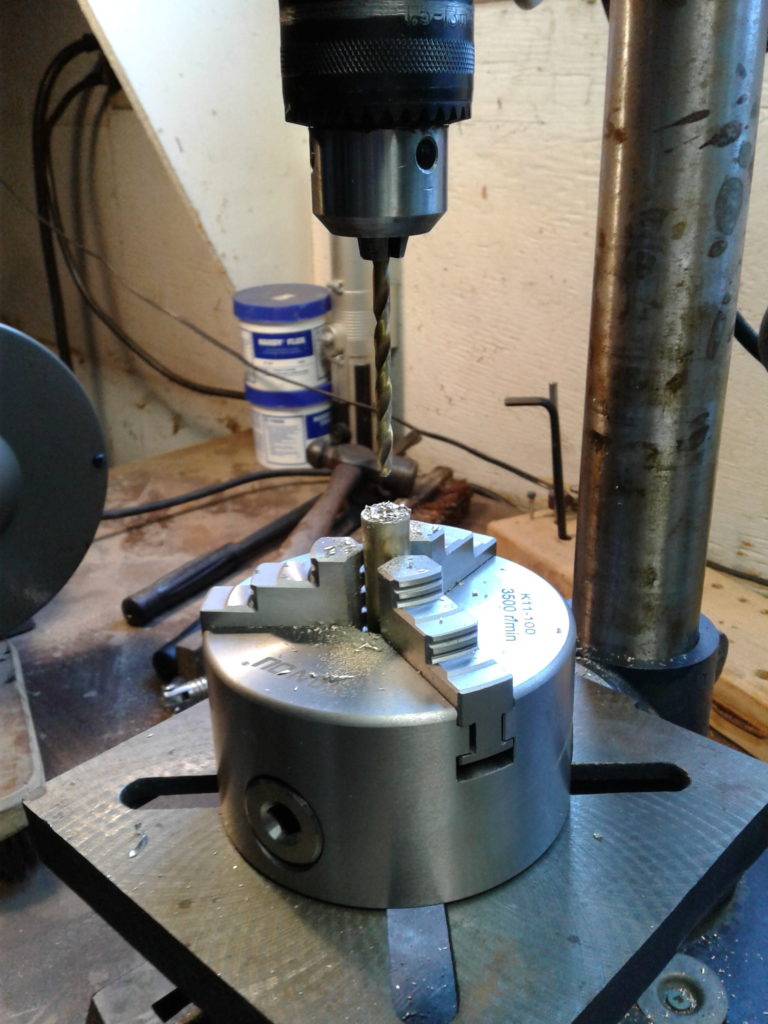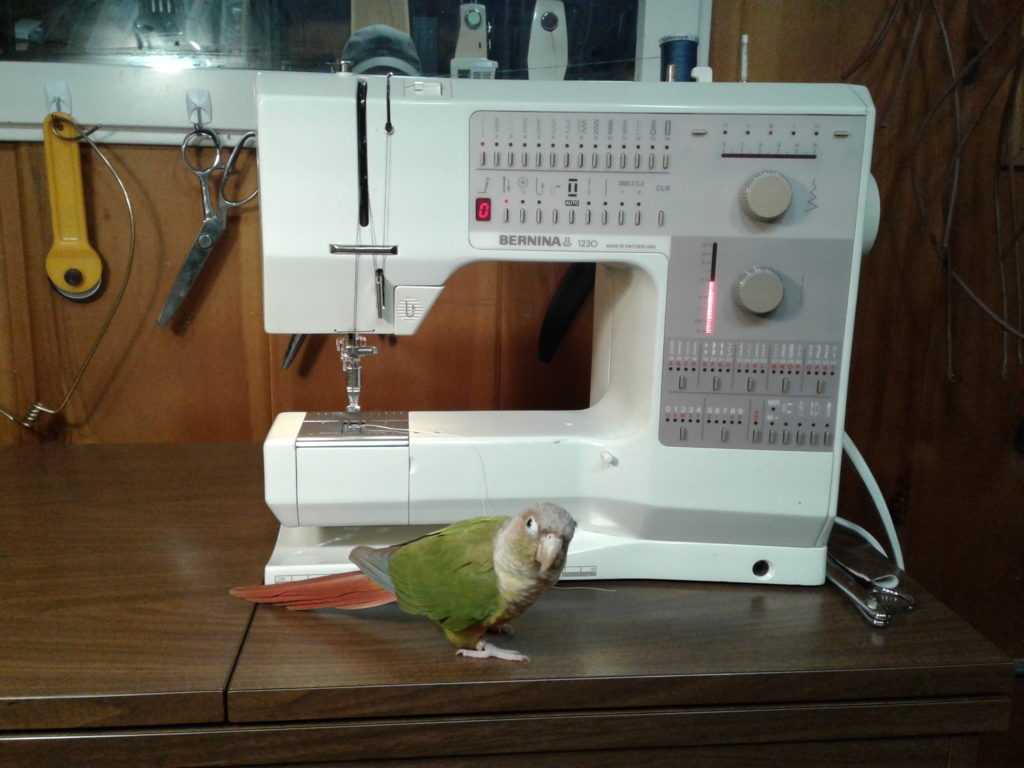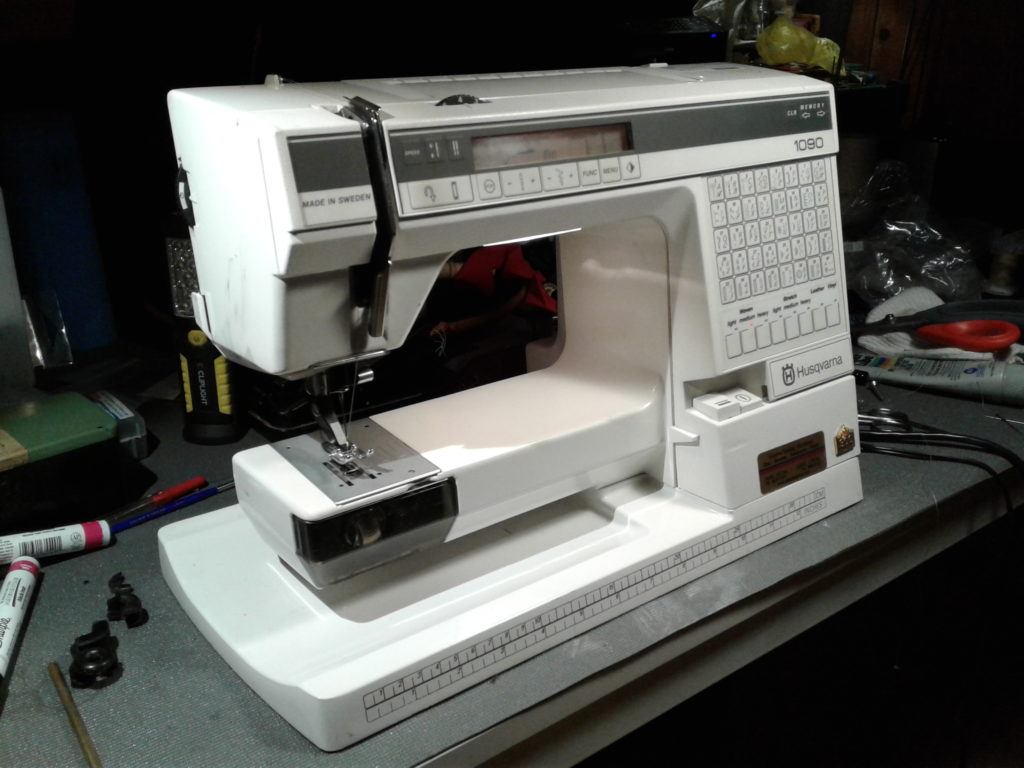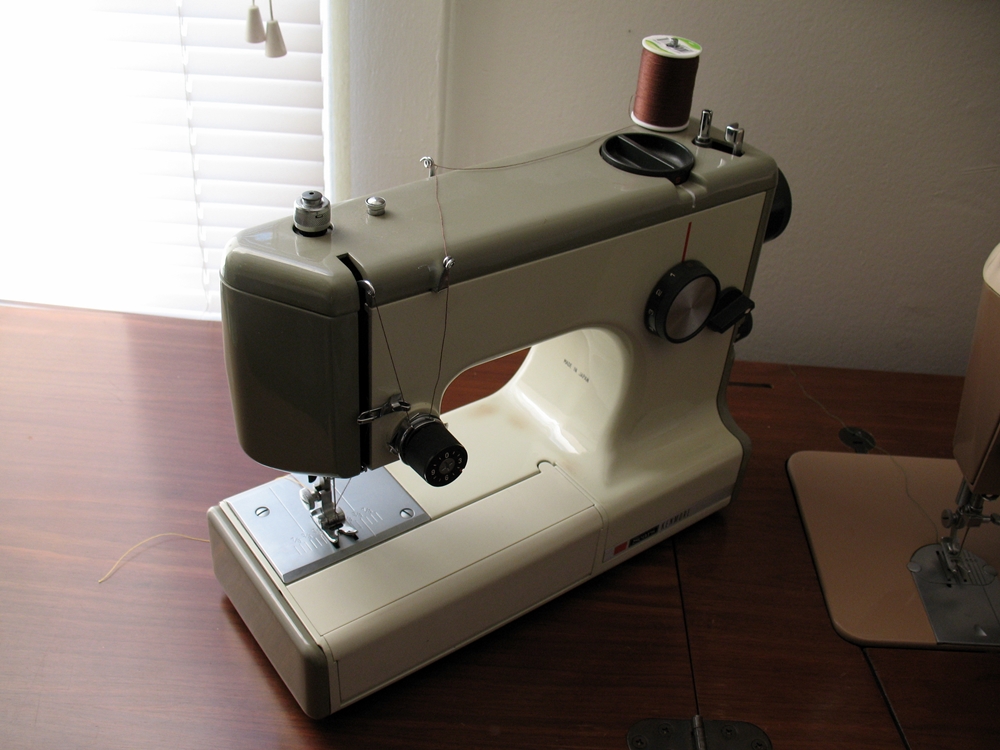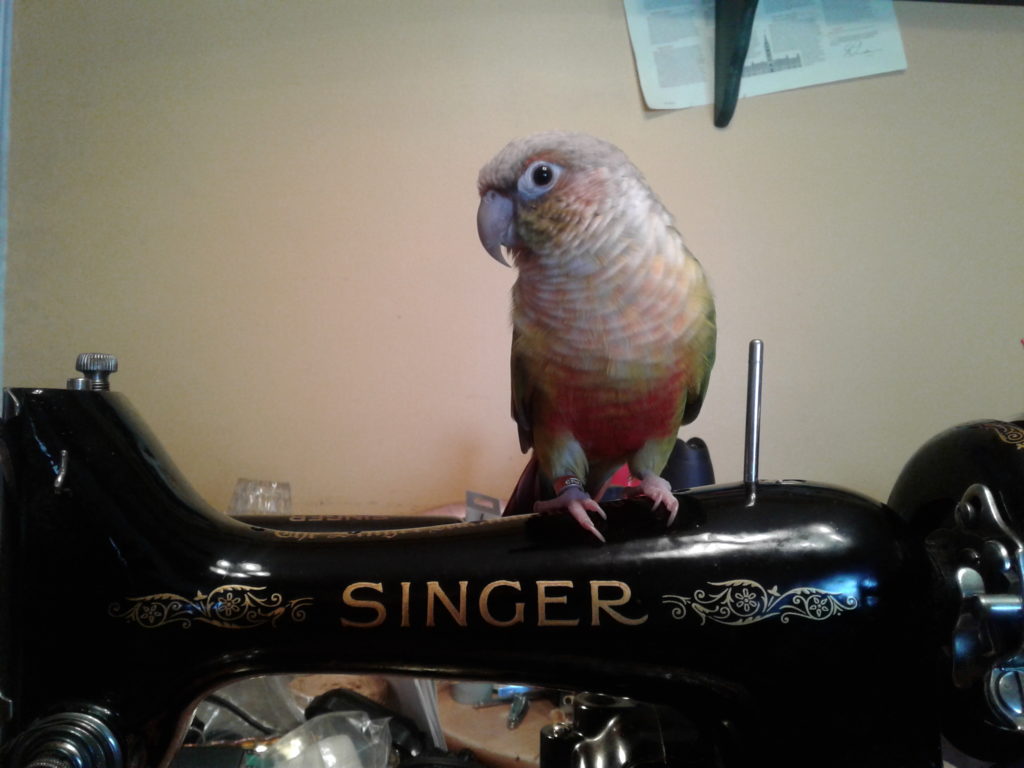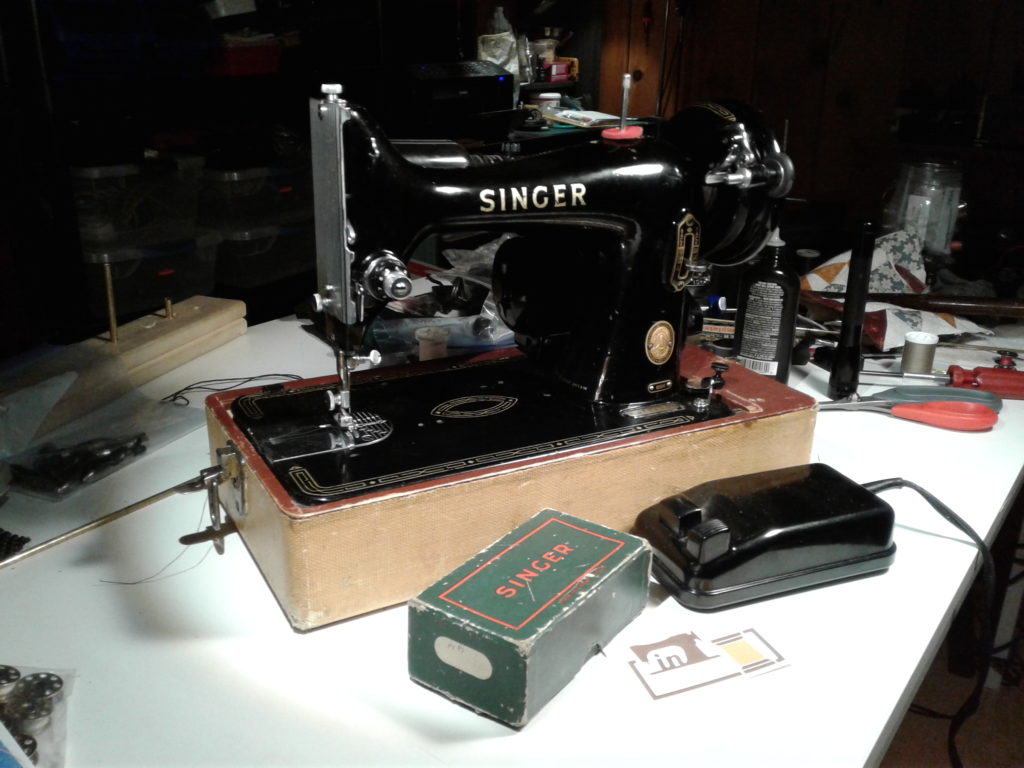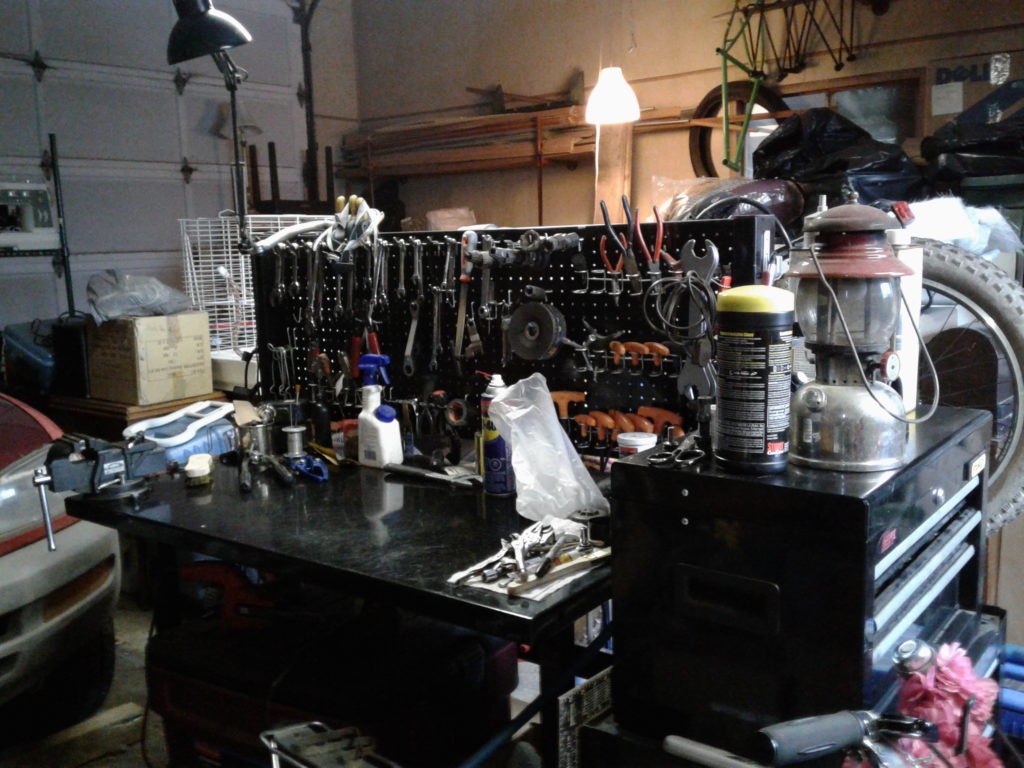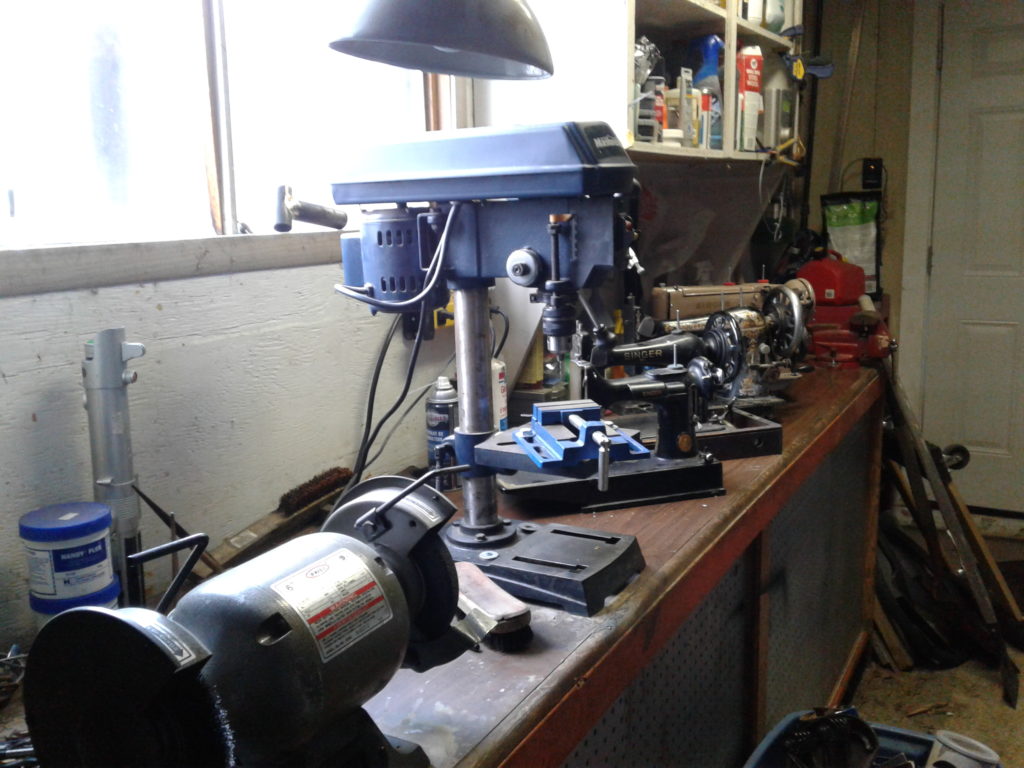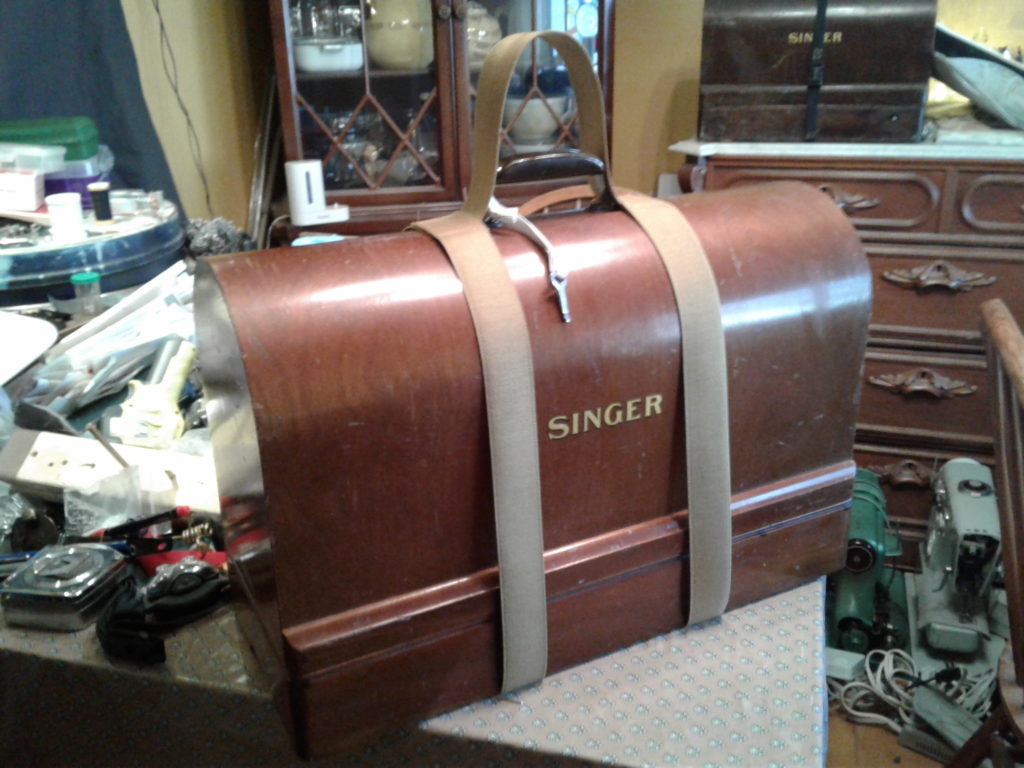
Our newest machines sews terribly… 🙂
I went out on a service call several weeks ago and as I worked on machines had a lovely conversation with the owners of Roc Tan industries, a company that fabricates wind socks for airports, industrial sites, and anywhere one may need to know what the prevailing winds are for safety.
We started talking about machining and specifically lathes, and that I had been hunting for one, and Brian said he had an old Atlas in his shed that I could have… for free. To say I was gob smacked would have been an understatement.
I needed to buy a motor and order some parts to get it up and running and tooled up for production work in our shop and for the last week and a half the little lathe has been humming along nicely.
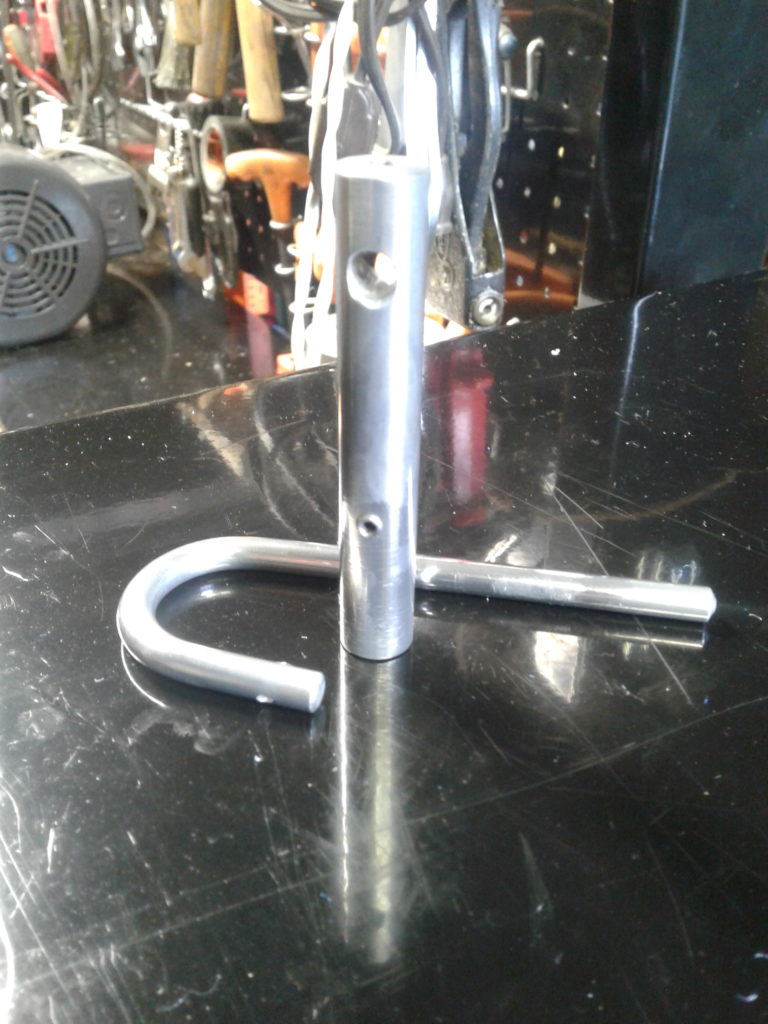
I turned out this custom aluminium thread stand for a long arm quilting machine yesterday, a special order for a friend who was not pleased with the company’s offering of some overpriced and ugly looking plastic. even if I had billed her the full rate for a custom part it would have cost less than the plastique.
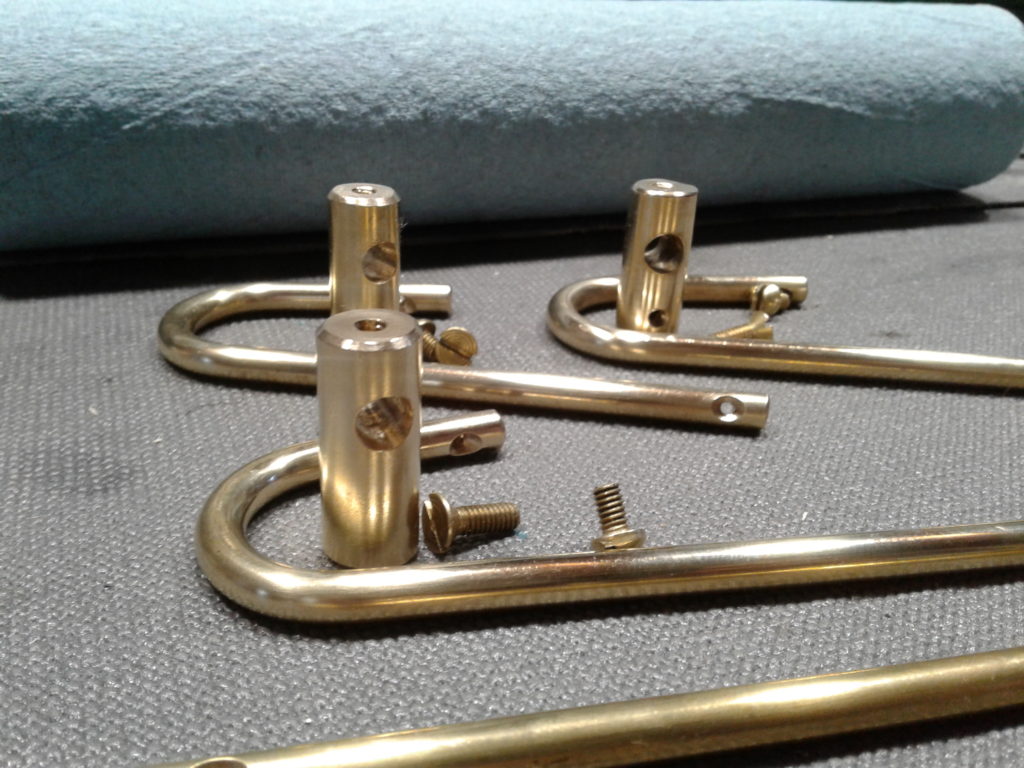
We are presently making a lot of our new thread stands and the lathe is the ideal tool for doing most of the work which helps me as I cannot spend that much time on my feet.
This will allow us to make more custom parts, especially when you have to deal with proprietary threading or need to make something that is rare or simply unavailable.
Most people think of lathes as being huge industrial machines but this vintage Atlas 618 fit in the back of the RAV easily for it’s ride home as it is less than 40 inches wide and weighs less than many industrial sewing machines.





